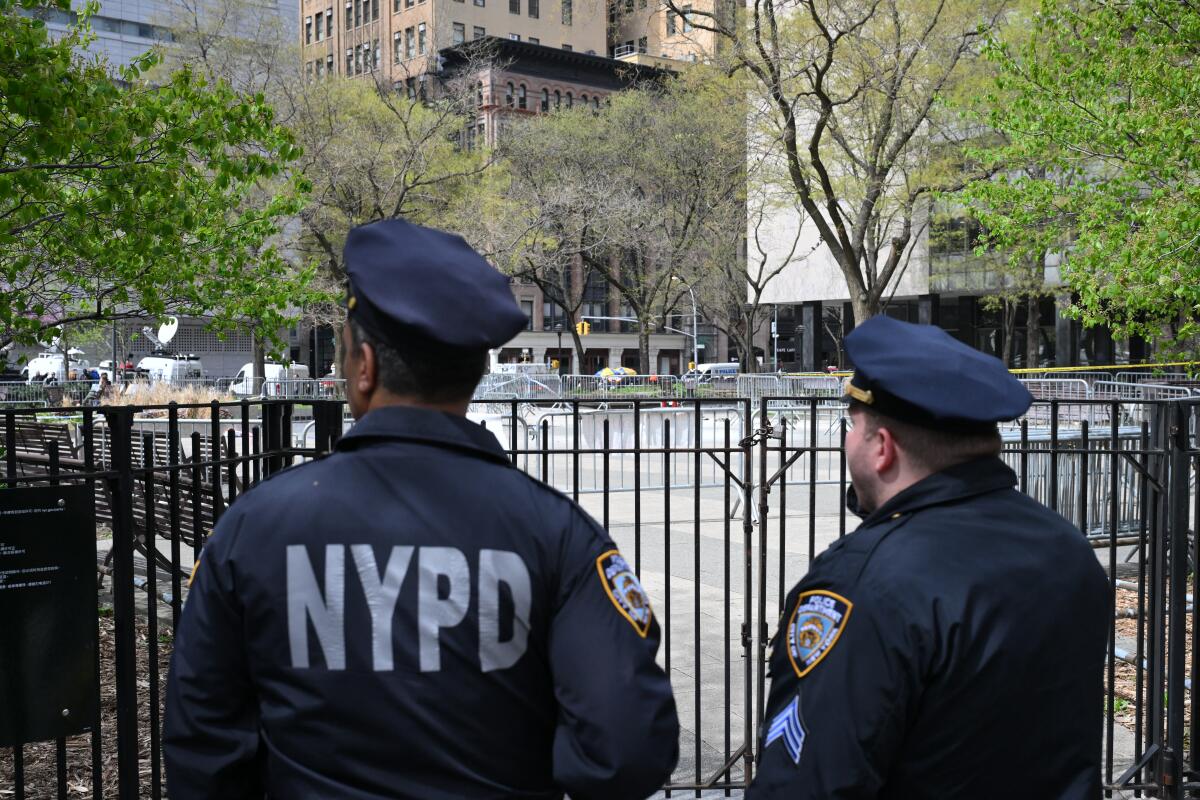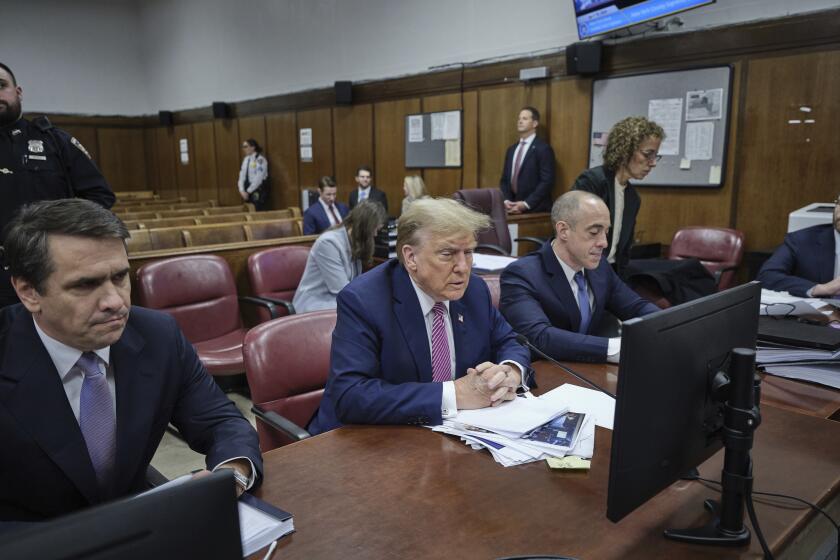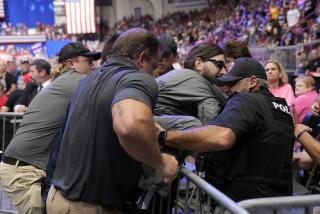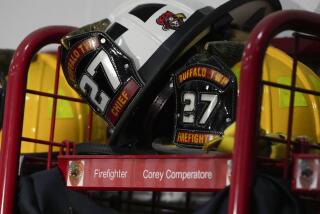Man who set himself on fire outside Trump trial and spouted conspiracy theories dies

The man who set himself on fire Friday outside the New York City courthouse where former President Trump is on trial died of his extensive injuries, authorities said.
Maxwell Azzarello, 37, a St. Augustine, Fla., resident who arrived in New York this week, was rushed to the burn unit at New York Presbyterian-Cornell Hospital after the shocking incident. He died just before midnight, New York City police said.
On Friday, Azzarello joined other protesters, Trump supporters and media who have been stationed in Collect Pond Park outside the downtown Manhattan courthouse as Trump’s “hush money” trial gets underway.
There was no indication Azzarello had any specific grievances related to Trump or his trial. Instead, police described him as a “conspiracy theorist.” A New York Times photographer took a picture of Azzarello holding a sign that read, “Trump is with Biden and they’re about to fascist coup us.”
About 1:30 p.m. Eastern time, Azzarello walked to the center of the park, pulled pamphlets from a book bag, threw them into the air, then doused himself with liquid, New York Police Chief Jeffrey Maddrey said. Officials said the liquid was an alcohol-based cleaning solution.
“He lights himself on fire,” Maddrey said during a news conference Friday afternoon.
CNN showed video of flames engulfing the man’s body as bystanders ran from the rising dark smoke.
The flames continued to burn for a few minutes before a New York police officer ran toward Azzarello with a fire extinguisher. Four officers suffered minor injuries putting out the flames. Maddrey said people used coats and fire extinguishers to help quell the flames.
The incident occurred shortly after a full jury of 12 people and six alternates had been seated in Trump’s hush money case, the first criminal trial of a former U.S. president.
A full jury is seated in Donald Trump’s hush-money case. Opening statements will start Monday in the first criminal trial of a former U.S. president.
Police said Azzarello did not appear to have targeted anyone else in the incident. He appeared to have reached out to several news outlets beforehand to announce the planned self-immolation.
Writing on Substack, he described himself as an “investigative researcher” and rambled about conspiracy theories.
He referred to cryptocurrency as a Ponzi scheme that was engineered to bring about a worldwide coup and described “The Simpsons” as propaganda for the mafia.
Azzarrello worked as operations director for the congressional campaign of U.S. Rep. Ami Bera (D-Elk Grove) for about four months in 2014, a representative for the congressman’s office confirmed to The Times.
“I recall that Max worked on one of my early campaigns,” Bera said in a brief statement. “This is tragic news and my thoughts and prayers are with his family at this time.”
A LinkedIn profile associated with a Max Azzarello shows he held a similar position in 2013 working on a political campaign for Tom Suozzi, who recently won a special election for a U.S. House seat in New York. Representatives for Suozzi’s offices did not immediately return calls to confirm Azzarello’s employment.
Online records also show Azzarello worked for Strong Towns, a nonprofit media advocacy group. His employment history, however, appeared to have been removed from the website Friday afternoon.
Police said his family appeared unaware that he had traveled to New York. Reached by phone, his father hung up on a reporter from The Times.
On his Instagram account just minutes before the incident, Azzarello posted a story with the words, “I love you” written repeatedly.
NYPD Chief of Detectives Joseph Kenny said police identified a vehicle that Azzarello may have used but were still working to locate it. Authorities spoke with his family, who said they didn’t know he was in New York.
Times staff writer Noah Goldberg and the Associated Press contributed to this report.
More to Read
Sign up for Essential California
The most important California stories and recommendations in your inbox every morning.
You may occasionally receive promotional content from the Los Angeles Times.












